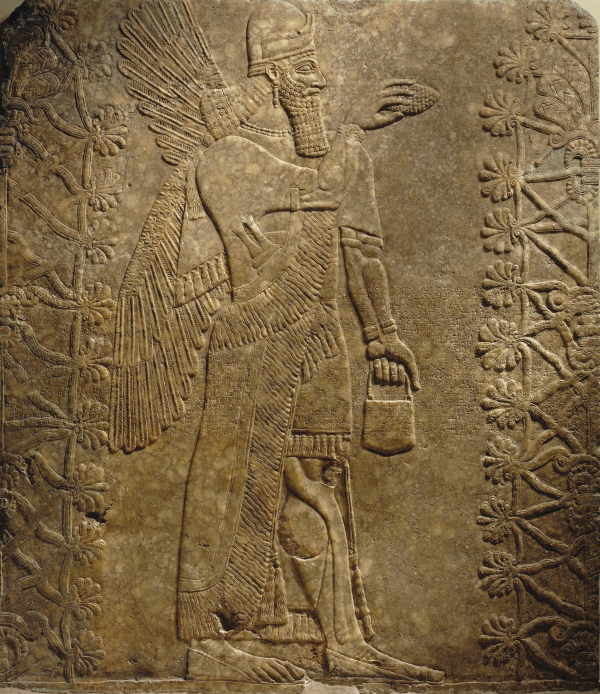
Winged Genie. Nimrud, Assyria (modern-day Iraq). Neo-Assyrian Period, reign of Ashur-nasir-pal II, circa 883–859 B.C.E. Alabaster, 931⁄16 × 8013⁄16 in. (236.3 × 205.3 cm). Brooklyn Museum; Purchased with funds given by Hagop Kevorkian and the Kevorkian Foundation, 55.147
Assyrian Art
Long-Term Installation
Kevorkian Gallery, 3rd Floor
The decoration of the royal palaces of the ancient Middle Eastern kingdom of Assyria was meant to overwhelm the ancient visitor with the king’s power and to reveal the supernatural world where he existed. The twelve reliefs on view decorated the vast palace of King Ashur-nasir-pal II (883–859 B.C.E.), one of the greatest rulers of ancient Assyria. Completed in 879 B.C.E. at a site then called “Kalhu” (modern Nimrud, slightly north of Baghdad, Iraq), they were carved with majestic images of kings, divinities, sacred trees, and magical beings called apkallu, or “genies.” The Assyrians believed that apkallu had survived the primordial flood to serve the king. These winged figures could be either human- or eagle-headed.
The archaeological site of Nimrud in Iraq suffered serious damage at the hands of the Islamic State (also known as ISIS, ISIL, or DA’ESH) in 2015. Ancient polytheistic images like those displayed here were a particular target. Iraqi forces reconquered the area in 2016.
Funding for the Brooklyn Museum Conservation department's documentation, cleaning, and remounting of the reliefs was generously provided through a grant from the Bank of America Art Conservation Project. We are deeply grateful for their partnership and generosity.
In 2009 two sloped floors designed to improve wheelchair access to the Kevorkian Gallery were added with funding from the State of New York.
